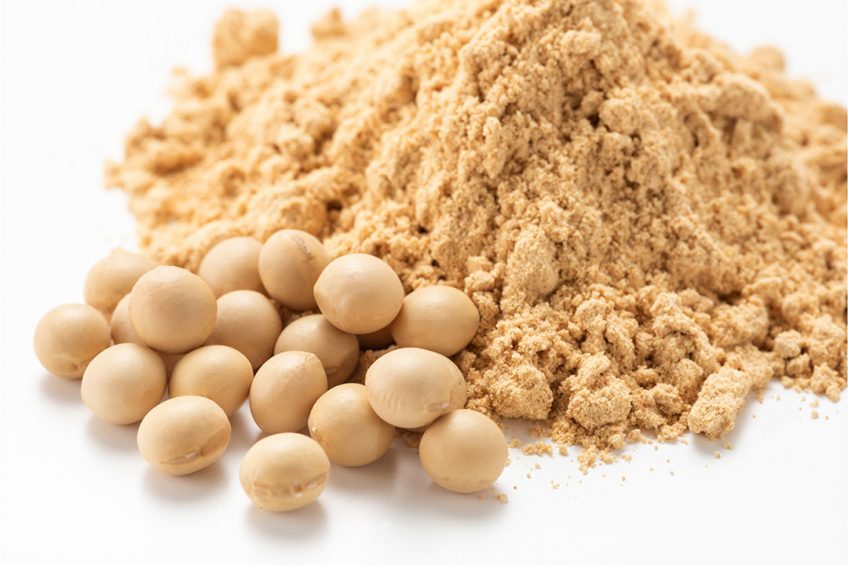Processing is key to unlocking value of soybean meal

Soybean meal (SBM) can vary hugely in its consistency and quality. To choose the right protein source, it is important to check the protein quality parameters as well as the carbohydrates profile.
The protein quality of feed is key to ensuring high levels of performance. Protein quality can be influenced by several factors including the choice of raw material, use of additives, the health status of the animal, and the processing techniques.
The main target of processing of SBM has always been about reducing and inactivating anti-nutritional factors (ANF) and increasing nutrient digestibility. However, removing ANF alone will not always result in an improvement in the quality of protein and AA as reported by previous studies. Certain processing techniques and/or conditions may also deteriorate the digestibility of protein, which will not only negatively affect animal performance and their gut health conditions, but also have an impact on the environment through increased nitrogen excretions.
Evaluating protein quality of feed
There are several parameters that we should check to evaluate protein quality of SBM and soy protein. The amount of lysine (Lys) that still possesses its reactive ε-amino group after processing represents the amount of undamaged Lys that remains available to the animal, known as reactive or available Lys. Moreover, the ratio between Lys and crude protein (Lys: CP) is a simple but highly accurate measure of heat damage. When an ingredient is heat damaged to extreme level, the concentration of Lys is reduced, but the concentration of CP is not. For SBM and value-added soy protein, a Lys: CP ratio of 6 and above is generally accepted as an indicator of good protein quality. However, the most accurate way to evaluate the protein quality of a feed ingredient or diet is through in vivo digestibility experiments to measure standardised ileal digestibility (SID) of protein and amino acids (AA).
A recent study reported that thermomechanical and enzyme-facilitated processing of SBM significantly increased SID of CP from 88.4 to 90.3% and increased SID of all essential AA from average 89.7% to 92.3% in weaned pigs. After thermomechanical and enzyme-facilitated processing of SBM, SID of all indispensable AA, except Thr, was above 90%. Moreover, the same study also showed that processing can enhance not only the digestibility or total amount of protein be digested, but also the rate of protein digestion along the gut. The digestion time in the small intestine averages 3.6 hours of 14 to 35-day-old piglets fed milk or soy protein diets. Thus, protein digestion within 4 h is crucial in young pigs so that more AA are available for protein deposition and less protein escapes the small intestine and enters the large intestine. Additionally, the microbiota and host compete for protein and AA in the gut and metabolites from protein fermentation (e.g., biogenic amines, indoles, phenols, cresol, and ammonia) can reduce gut health in young animals. Apparently, a high digestible soy protein source with high amount of fast digestible protein and low content of resistant protein would results in high efficiency of protein utilisation and limit protein fermentation, thereby support animal growth and gut health.
Processing techniques
Among current processing techniques, thermomechanical and enzyme-facilitated process can reduce resistant protein to a greater extent (up to 50%) than extensive extraction to produce soy protein concentrate (SPC) and fermentation (Figure 1). This processing is unique because thermomechanical treatment and enzyme-facilitated processing are combined to produce new generation functional protein (AlphaSoy and Cellpro) for young animals. The thermomechanical and enzyme-facilitated processing reduces ANF in SBM, thereby reducing stress on the digestive tract by less inhibition of digestive enzymes and fewer endogenous losses of protein that are particularly important for young, developing pigs. Moreover, the processing may alter SBM protein and fibrous structures, thus allowing better access for porcine digestive enzymes.
Carbohydrates profile
Traditionally, SBM and soy protein are regarded as protein sources. As such, their energy value, which is almost as high as corn/maize, is forgotten. Digestible carbohydrates (digestible CHO) such as starch, glucose, sucrose and lactose are very easy to digest and are ideal for immature digestive systems like those in young animals or weaned piglets. In contrast, fermentable carbohydrates (fermentable CHO) cannot be digested by digestive enzymes but need to be fermented by microorganisms in the gut. This is a less efficient way of harvesting energy compared to using digestible CHO. As a result, digestible CHO have almost double the energy value of fermentable CHO (11.7 vs. 7 kJ/g, respectively). Feeding high fermentable CHO to the pigs immediately in the first week post weaning increased low eaters by 65% and increased the incidences of diarrhoea by 75% in poor sanitary condition. High fermentable CHO in diet is “an additional risk factor” that negatively impacts on piglet health and limits growth, especially in poor sanitary condition. This is partly because high dietary level of fermentable CHO significantly decreased the digestibility of protein and starch both at ileal and faecal level in weaned pigs at day 7 post weaning. Processing like thermomechanical and enzyme-facilitated technology is the most effective method to manipulate the carbohydrate profile in SBM and feed ingredients. The process is designed to dramatically change the fibrous structure of SBM by boosting the digestible carbohydrate content and reducing the fermentable carbohydrate content in AlphaSoy compared to conventional SBM, enzyme-treated soy, fermented soy and especially SPC (Figure 2). Consequently, the energy value contributed by digestible CHO in AlphaSoy is almost 9 times higher than in SPC.
Understanding processing effects
In general, the manufacturing process is vital in creating a consistent, high-quality, protein-rich ingredient. Processing improves the ingredient structurally, compositionally and nutritionally. Thus, understanding processing effect as well as protein and CHO quality parameters would provide us the insights into any protein source.
References are available on request







